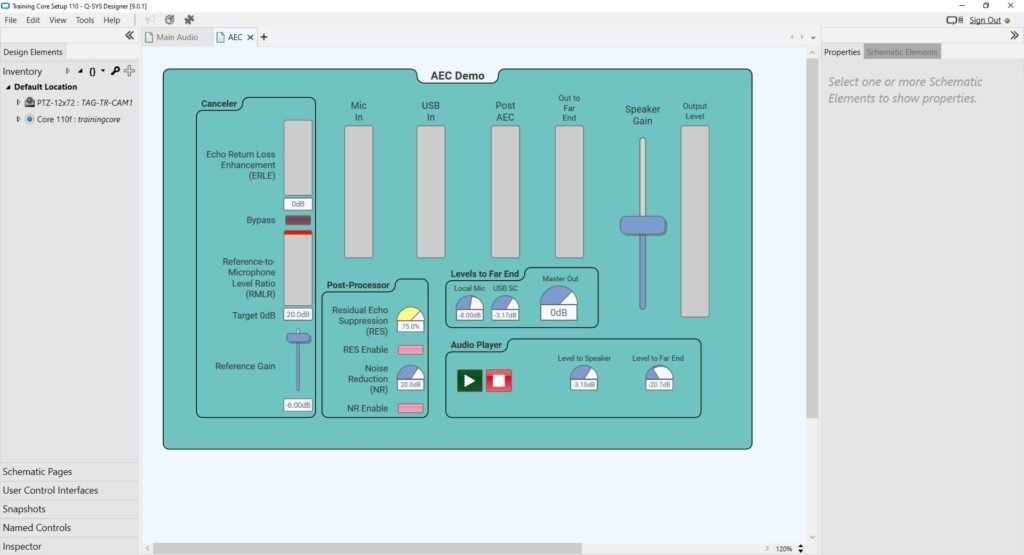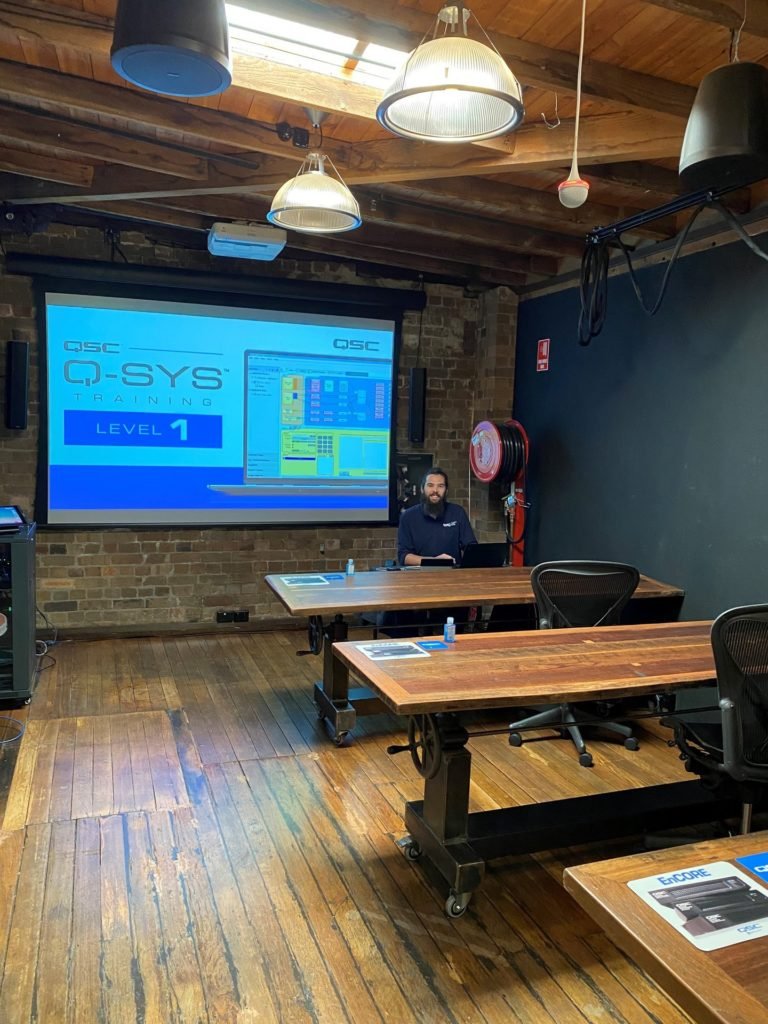News
10 Jun 2021
TAG take Q-SYS training online

Subscribe to CX E-News
(Pic: TAG’S Matt Stapleton)
QSC’s market leading Q-SYS networked AV environment has broken a lot of ground over the last few years, in both hardware and software. It also leads the pack in training and certification, with some of the best online courses ever created, starring the AV-famous Pat and Nat. I’ve often raved that QSC’s decision to hire long-term friends and improv comedy buddies Patrick Heyn and Nathan Makaryk as Senior Director of Marketing and Senior Training Manager is the best marketing decision ever made by a manufacturer.
Australian QSC distributor Technical Audio Group have been running excellent in-person training sessions in both their Sydney and Melbourne offices for years. Customers love getting into a room with the gear, and getting to know their local technical gurus and support staff. TAG’s training is so popular, they had to tour it around the country. But 2020 saw TAG’s plans hit with two very different problems.
First – the good problem. Q-SYS has gotten so popular, and the requirement for installers and AV staff to be Q-SYS certified so embedded into tenders and contracts, that there was a huge backlog of people waiting to get into training sessions. The bad problem was the lockdowns, border closures, and possible quarantine and isolation issues that would come with physically trying to move around Australian capital cities during a pandemic.
The basic introductions and Level 1 Q-SYS training has always been offered free online, with the more difficult subjects of Control and DSP handled in-person at Level 2 courses. These are where the real hands-on knowledge comes in, and the certification becomes meaningful. With a rack of touring gear grounded at TAG’s Strathmore HQ and the doors shut to visitors, Design and Support Specialist Matt Stapleton had to find a way to get the still-busy AV install market the training it was clamouring for.
“We had a massive 2020 planned,” sighs Matt. “It was a huge calendar line up, in a new state every month. Obviously, that didn’t happen. When we run Level 2 in person, everyone gets a Core, touchscreen, speaker and mic, and gets to play with the equipment. QSC had run it virtually in two ways previously, with every student having a dedicated PC in the classroom they could remotely control, or by configuring VPNs for the students to connect to. Setting up to deliver the amount of virtual training we needed with either method would have required a huge amount of dedicated equipment and been very complicated in terms of networking. But then, QSC released version 9 of their Reflect Enterprise Manager.”
The big new feature added in Version 9 is the ability to log in to Cores remotely, via Reflect’s cloud service, over public internet. Not only did this mean Matt could set up a Core at HQ and have his students log in, it enables integrators and service technicians to check in and perform maintenance on any Cores they’re responsible for, from anywhere with an internet connection. No more three-hour roundtrips to hit the ‘unmute’ button.
“When we run Control 201 online, we use a Core as a third-party device emulator,” explains Matt. “The students dial into it, and we do things like run a simulation of multiple televisions you can turn on and off, and change their channels. We did this previously in person on a local network, but now students can send strings to those port numbers over the internet. When we’re doing DSP, you can make changes to a design, play audio through the system, and verify signal with the real-time visual RTA you get with the Hover Monitor.”
There’s a couple of upsides to going virtual. “One advantage of virtual training is that you can do excellent AEC demos,” Matt illustrates. “In person, it’s really hard, because of course there’s no ‘near end’ or ‘far end’. AEC is a fundamental component of most jobs now, and actually being able to demonstrate how it works and what happens if you don’t get it right is invaluable. During a training session, I can bypass it, I can wind it in and out, and turn the gain up and down. It’s a real-world example of how you should commission a system.”

After students have got their certification, Reflect becomes a valuable tool in their workplaces. “I think our industry is on the verge of shifting from being reactive to proactive,” offers Matt. “An AV tech can log on and check a system, with monitoring on speaker or microphone connections. Third party devices like TVs can be verified as being on or connected. You can set-up Q-SYS to run a ping module to any networked device, and if it goes offline, you get an email. Integrators don’t have to go to the trouble and expense of leaving a dedicated NUC onsite anymore. Another advantage is that the dual network interface on Q-SYS Cores mean LAN A can connect to Q-SYS devices like amps, and LAN B can be the internet connection, keeping the Q-SYS network separate from general traffic.”
TAG are now rolling out Level 2 training both online and live. “We’re finding a balance between the in-person Sydney and Melbourne sessions, and the virtual,” concludes Matt. “The demand is there, and the call is out. We’re ready to go for whoever needs us.”

Upcoming Training Dates
June
23-25 – Level 2 (Virtual)
29-30 – Level 2 (Sydney)
July
6 – Level 1 (Sydney)
7-8 – Control 201 (Virtual)
August
3 – Level 1 (Sydney)
10-11 – Level 2 (Sydney)
17-19 – Level 2 (Virtual)
23-24 – Level 2 (Melbourne)
25 – Level 1 (Melbourne)
Check https://training.tag.com.au/ for calendar or email training@tag.com.au for registration
Subscribe
Published monthly since 1991, our famous AV industry magazine is free for download or pay for print. Subscribers also receive CX News, our free weekly email with the latest industry news and jobs.






